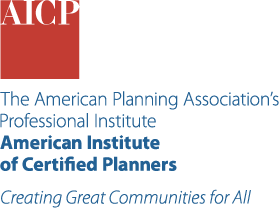Equity In Practice
Transforming Kansas City’s Historic 18th and Vine District

The 18th and Vine District in Kansas City, Missouri, is a cornerstone of African American culture and history, known for its contributions to jazz and home to the Negro Leagues Baseball Museum.
Community Challenge
Despite its cultural significance, the neighborhood has faced decades of systemic neglect. Covenants and deed restrictions in the early 20th century prevented Black residents from moving elsewhere, forcing segregation and exacerbating inequities. These policies led to concentrated poverty, underinvestment in infrastructure, and disinvestment in businesses and public services. The impacts of this neglect are still visible today, with many residents facing economic challenges and limited access to resources in their community.
Planning Solution
The revitalization of the 18th and Vine District began with a significant step in July 2016: The Kansas City Council unanimously approved $7 million in funding for the area. This investment launched a comprehensive redevelopment effort to preserve the district's cultural heritage and address decades of systemic neglect.
In February 2022, the Kansas City Council approved a $23 million redevelopment plan for the 18th and Vine District, focusing on preserving historic facades and transforming blighted structures. The ongoing project aims to retain the architectural heritage of buildings along Vine Street between 18th and 19th streets, such as the historic Eblon Theater, by integrating their facades into new constructions.
Behind these preserved exteriors, the development will introduce approximately 33,000 square feet of ground-floor retail space, topped with two levels comprising 54 market-rate apartments. By maintaining the historic streetscape and repurposing these structures, the plan seeks to revitalize the area, stimulate economic growth, and honor the cultural significance of 18th and Vine.
In addition to preserving historic facades and revitalizing blighted buildings, a new pedestrian plaza is underway to enhance walkability and create a flexible space for cultural events. Construction began in the fall of 2024 and will be completed by summer 2025. The $5.4 million project includes wider sidewalks, improved lighting, and curb-free designs to improve safety and accessibility for pedestrians and visitors.
Infrastructure upgrades, funded by local and federal sources, aim to modernize the district's streets and public spaces. Federal grants, including $4 million championed by Congressman Emanuel Cleaver (D-MO), provided critical support for these efforts. The upgrades include improved lighting, new sidewalks, and enhanced public areas, creating a more welcoming, safe, and vibrant environment.
The city's commitment to community engagement is a vital component of this initiative. Planners worked closely with residents and business owners to ensure the projects addressed local needs and aspirations. This equity-focused approach rebuilt trust in the community and laid the foundation for long-term, sustainable success.
Outcome
The revitalization efforts have already shown progress, with several initiatives nearing completion. The pedestrian plaza is 60 percent complete as of early 2025. Scheduled for completion by summer 2025, the plaza exemplifies the district's transformation into a hub for cultural celebration and community gathering.
While significant progress in developing the historic buildings along the main thoroughfare is underway, including securing funding and initiating preliminary work, the project is still under development. The timeline for completion has been affected by various factors, including the complexities of preserving historic structures and ensuring alignment with community needs. Once completed, however, the District will generate revenue for local businesses and Kansas City as a welcoming community rich in cultural history.
Considerations for Your Community
The revitalization of the 18th and Vine District offers numerous insights for urban planners who aim to address equity and cultural preservation in their neighborhoods. One critical takeaway is the importance of collaborative engagement. By prioritizing residents' voices, Kansas City's planners ensured revitalization efforts aligned with community needs and aspirations, nurturing trust and a sense of ownership among stakeholders.
Another key consideration is the value of preserving cultural identity. The 18th and Vine District's historical legacy was not overshadowed in its redevelopment but celebrated, emphasizing its cultural legacy.
This approach demonstrates how urban planning can uplift a community's unique character while addressing systemic neglect. Further, the city's strategic use of obtaining federal funding and local investments created tangible benefits for residents.
Planners can draw on these strategies by adapting them to the unique history, needs, and challenges of their communities. By combining community input with targeted investments, Kansas City has laid the foundation for a more inclusive and thriving neighborhood.
Top image: iStock Editorial/Getty Images Plus - chapin31
About the author


